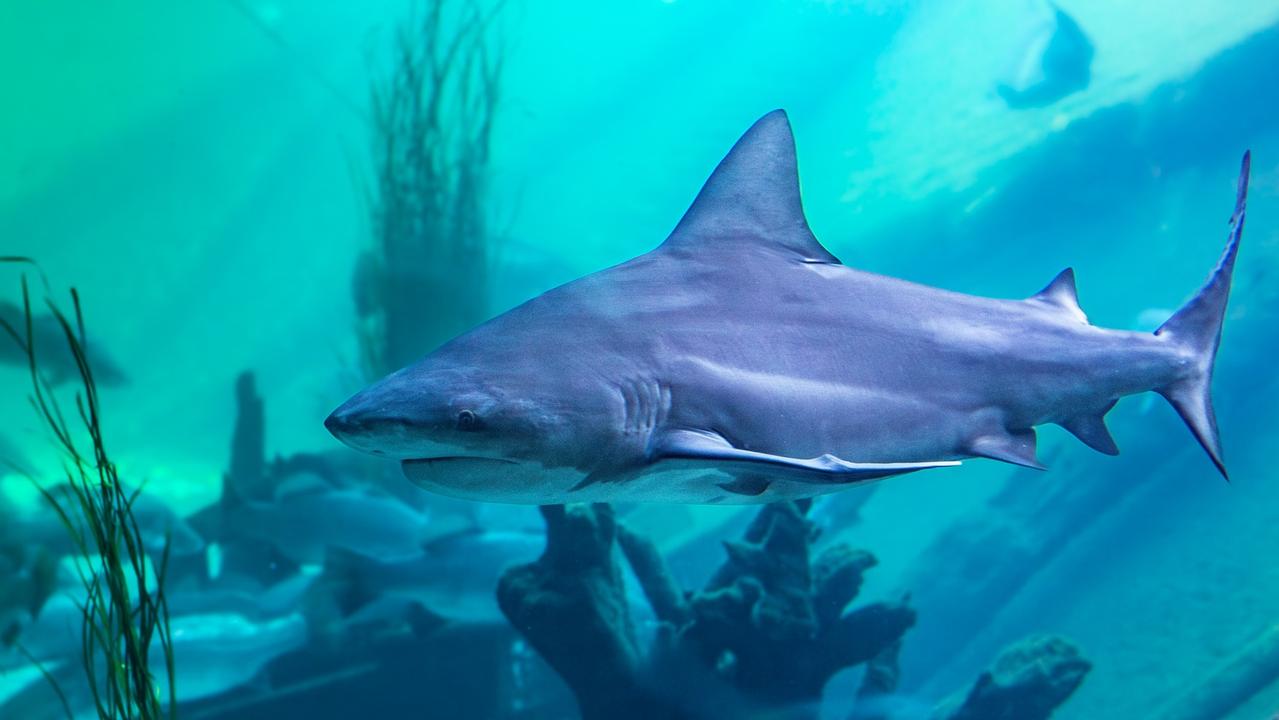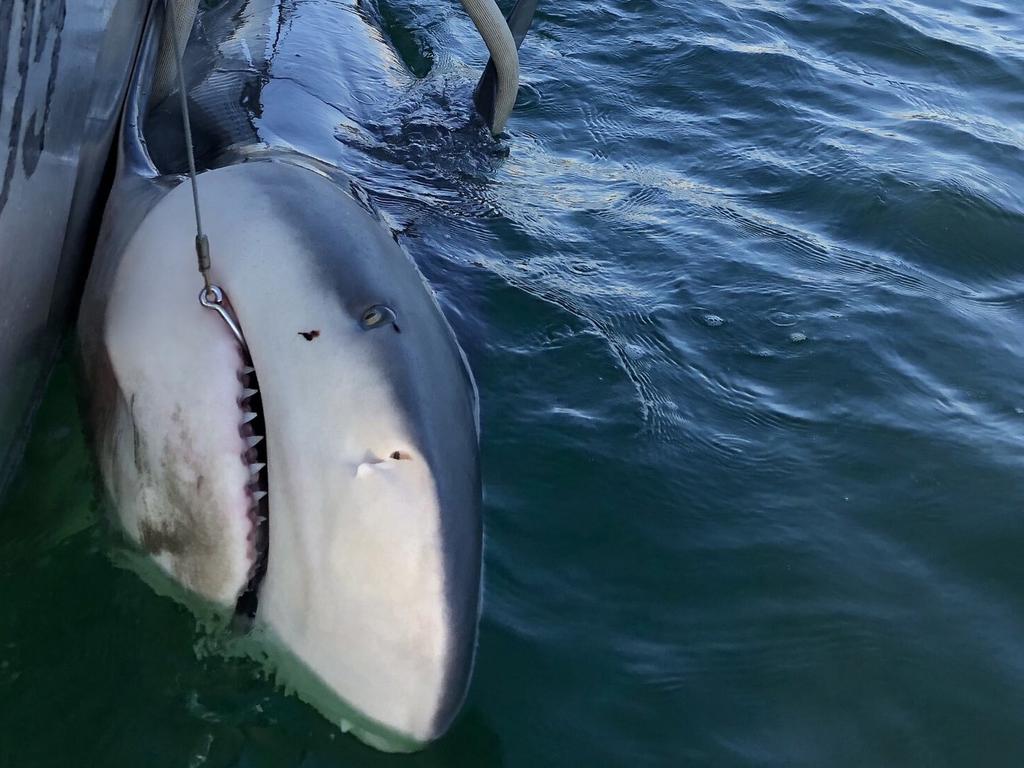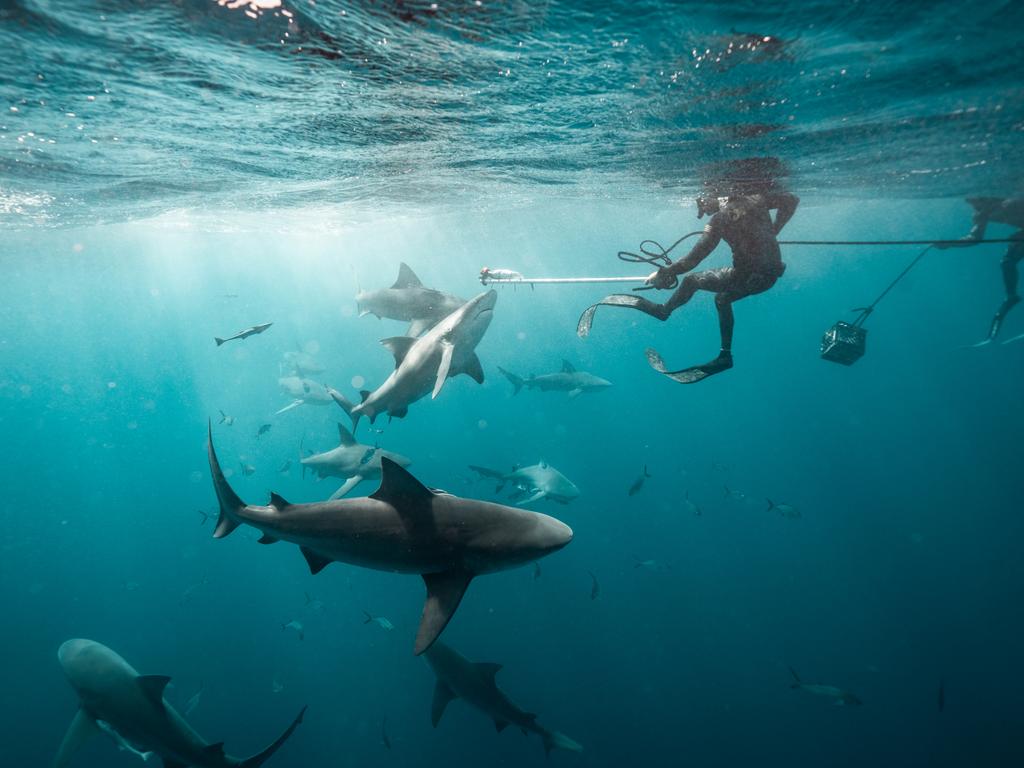Popular zoo confirms death of two bull sharks as ‘accidental impact’
Animal lovers have reacted with sadness after two bull sharks died at Sydney Zoo as some questioned whether such large fish species should even be confined to tanks – what do you think?

READING LEVEL: ORANGE
Two bull sharks have sadly died at an Australian zoo from an “accidental impact*”.
In a social media post published on Friday, Sydney Zoo confirmed it was “deeply saddened” by the loss.
“Extensive investigations by our animal care and veterinary* staff, with support from external specialists, included comprehensive necropsies*,” the statement said.
“These examinations found trauma* consistent with accidental impact.
“While the precise cause cannot be definitively confirmed, preliminary* findings suggest a combination of environmental and biological* factors may have played a role in this isolated incident.”
The zoo said all other species in the aquarium were “currently healthy” and remained under close observation.
“The wellbeing of our animals remains our highest priority,” it said.
The bull shark section of the animal page on the zoo’s official website has been removed.

Animal lovers expressed their thoughts on social media, including some who felt such large fish shouldn’t be kept in aquarium enclosures*.
“Translation: We put a species that needs a huge amount of space in an enclosed tank …”, one wrote.
Another asked: “How can it be isolated if two sharks collided with it”.
“Sorry but these sharks should never of been in captivity* as bull sharks are not designed for tanks,” a third said. “It is sad they have passed.”
“Accidental impact from what? I think further explanation is owed here,” another added.
Bull sharks can measure between two to four metres long and weigh up to 600kg.
They are known to be one of the more aggressive species of shark, with 119 confirmed attacks in Australia.

ABOUT BULL SHARKS*
The Australian Museum site states that bull sharks were likely responsible for most of the shark attacks that have occurred in and around Sydney Harbour, which includes the Parramatta River.
Summer and autumn are when bull sharks are most active across the harbour, from the Parramatta River through to North Head, according to research by the Department of Primary Industries (DPI).
The bull shark is unique as the only shark that stays in freshwater rather than saltwater for long periods of time to feed and breed.
It has been reported nearly 4000 km from the sea in the Amazon River system, and is known to breed in Lake Nicaragua in Central America.

The species is found in tropical and warm temperate waters worldwide. In Australia, bull sharks can be found from southwestern Western Australia, right around the northern coastline and down the east coast to the Central Coast of New South Wales.
Bull sharks are omnivorous. Their diet includes fish (including other sharks), dolphins, turtles, birds, molluscs and unlucky land-based mammals that have ventured into the water, including cattle, dogs, sloths, rats and – very rarely – people.
Bull sharks are born at between 55-80 cm and grow to up to about 3.5m in length. Female and males mature at around 2m at 20 years of age and on average live for approximately 50 years.
The bull shark also goes by a number of other names, including the river shark, freshwater whaler, estuary whaler and Swan River whaler.
* Source: the Australian Museum
POLL
GLOSSARY
- impact: act of a body or object colliding with something else
- veterinary: related to the science of animal health and care
- necropsy: autopsy, medical examination of an animal after its death
- trauma: physical injury, body wound/s produced by sudden impact, violence or accident
- preliminary: initial, coming before a more detailed or important action, report or examination
- biological: related to the natural processes of living things
- enclosures: areas that are closed off and separated
- captivity: being confined to a limited space and unable to leave
EXTRA READING
Algal bloom causing ocean crisis
Rare aquarium shark birth filmed
Shark net removal sparks debate
QUICK QUIZ
- What species of shark were involved in the accidental trauma at Sydney Zoo?
- The initial findings suggested two different factors may have played a part – what were they?
- What are three other names given to bull sharks?
- How many bull shark attacks have been recorded in Australia?
- Bull sharks are unique as the only shark species to do feed and breed in what kind of water?
LISTEN TO THIS STORY
CLASSROOM ACTIVITIES
1. Bull shark deaths
The big question everyone wants to know is what the “accidental impact” could have been that led to these sharks’ untimely deaths.
Work with a partner and brainstorm what circumstances might have led to these sharks dying from some sort of “impact”?
–
–
–
What should Sydney Zoo be doing to ensure this doesn’t happen to any other wildlife?
Time: allow 15 minutes to complete this activity
Curriculum Links: English, Science, Personal and Social, Critical and Creative Thinking
2. Extension
Is this incident proof enough that certain marine life shouldn’t be kept in enclosures? State whether you agree or disagree and provide your reasons.
Time: allow 10 minutes to complete this activity
Curriculum Links: English, Science, Personal and Social, Critical and Creative Thinking
VCOP ACTIVITY
Summarise the article
A summary can be a really good way to grab the main idea plus some key points in the article as a highlight. Think of the summary like a little advertisement or extract you could use to encourage people to read the article in detail. You want to give them an overview of the article that includes the main idea (being able to tell the audience what the article is about in one sentence), plus a few of the key points of the information.
Remember to re-read your summary to check that it is clear, concise and makes sense to the audience who haven’t read the article yet. You need to make language choices that allow you to explain the information in only a few sentences.

